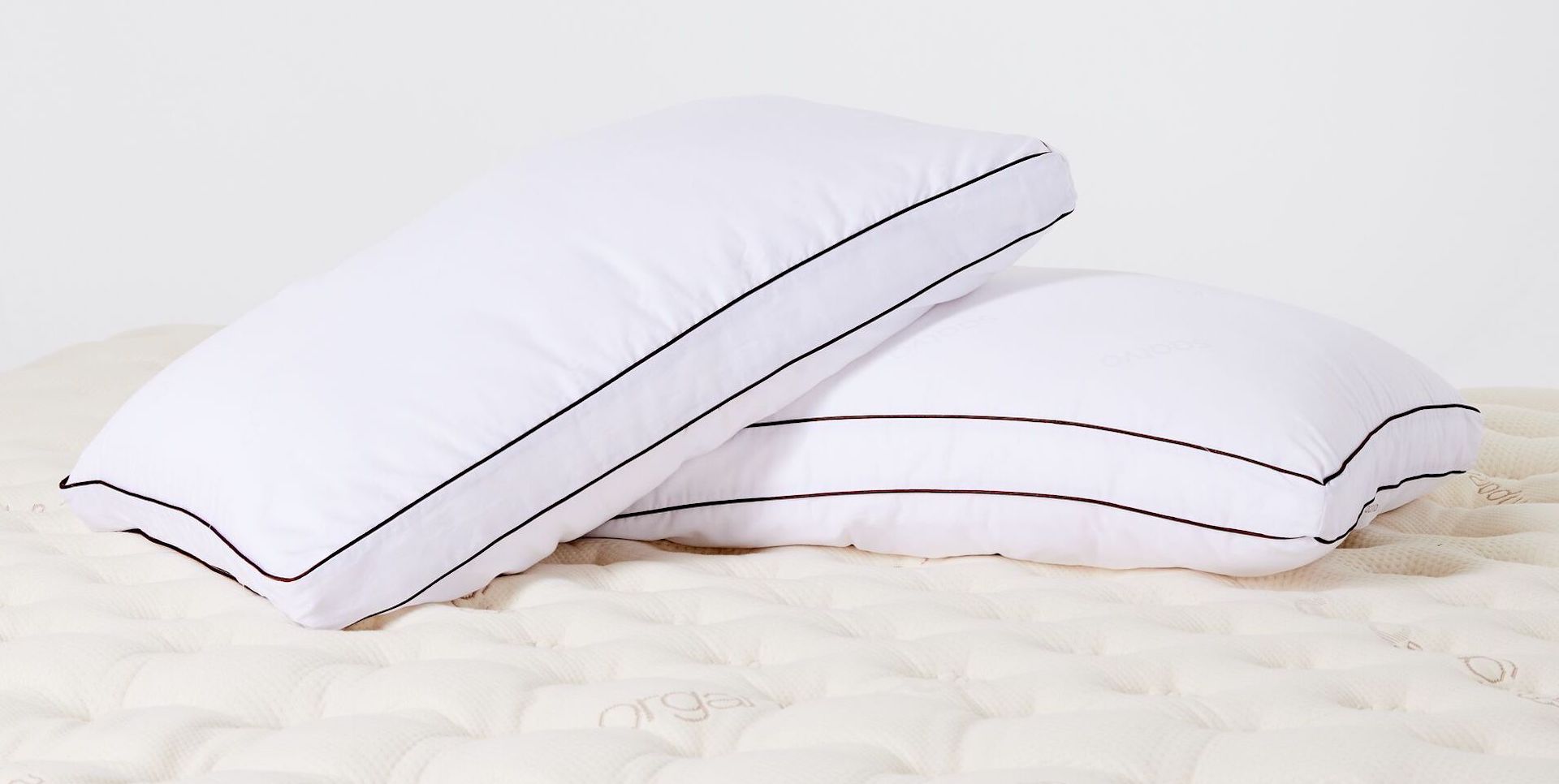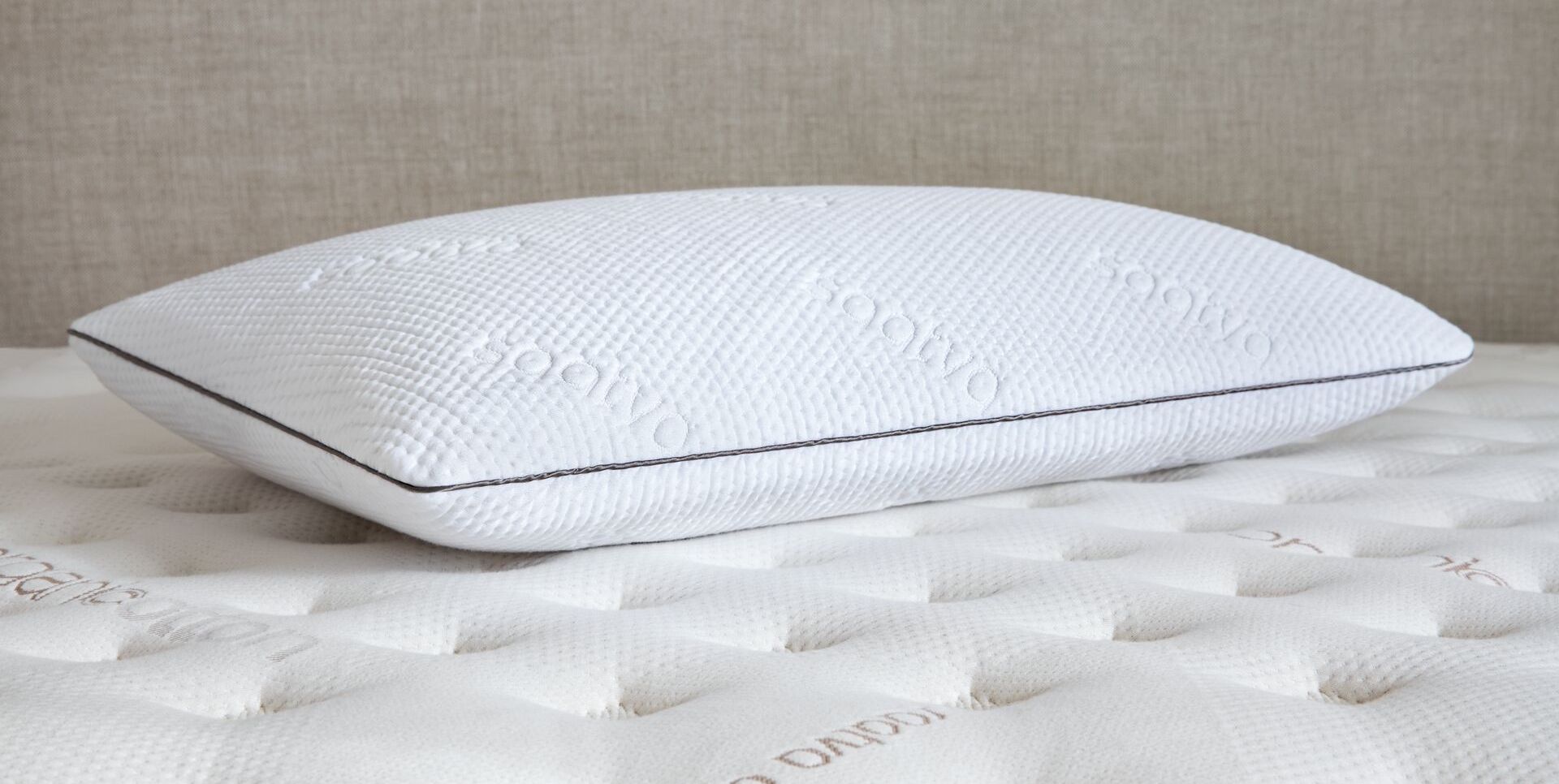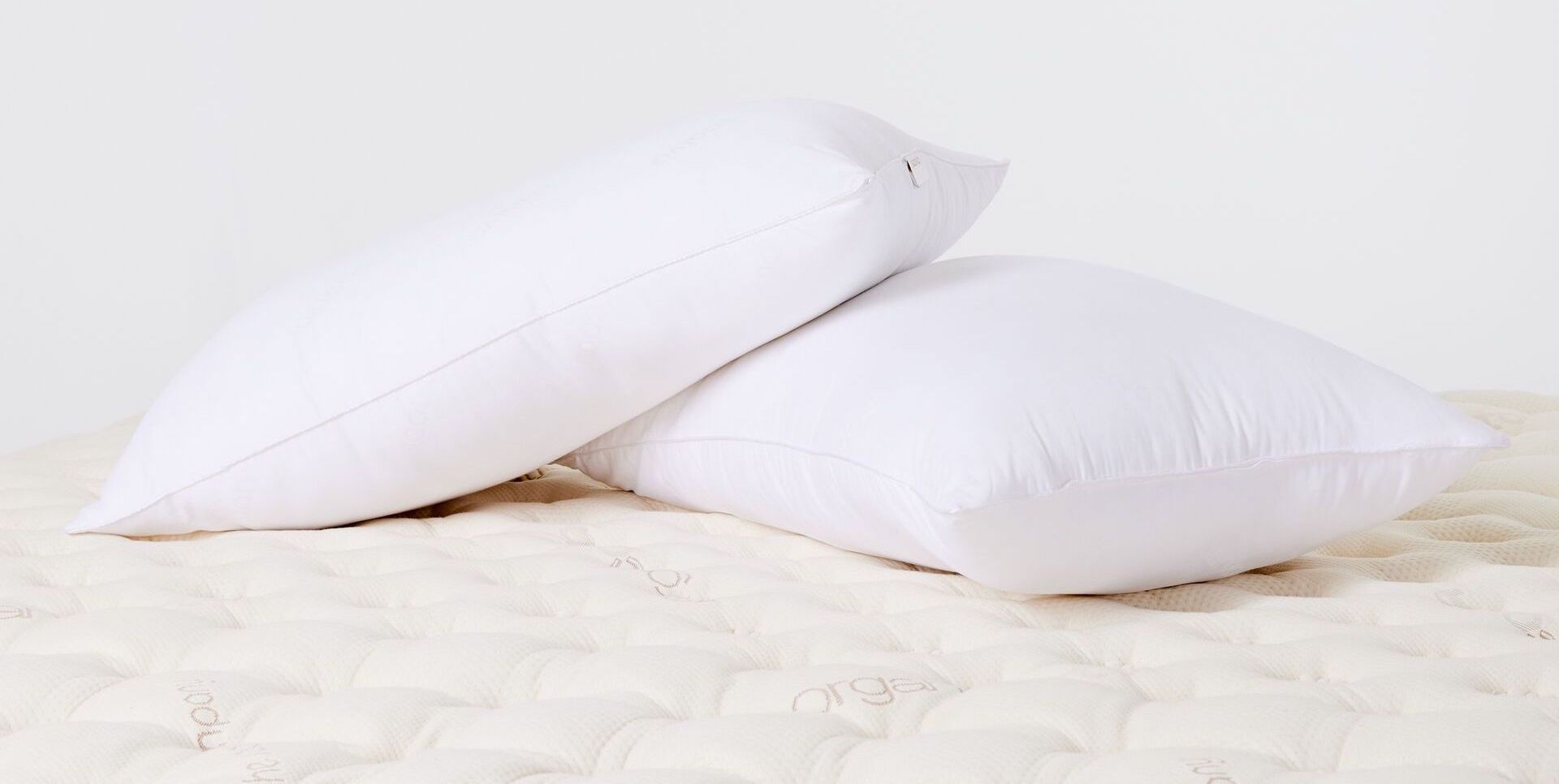If you live with back pain or neck pain, you know how hard it can be to get a good night’s rest. You toss and turn, unable to get comfortable. Time passes, frustration grows, and sleep seems ever more elusive.
One thing you can do right away is to make sure your pillow isn’t part of the problem. The wrong pillow may not only prevent you from finding relief but can actually increase the discomfort.
There are so many specialized pillows on the market that choosing the right one can be an exercise in confusion (and I’ve got the closet full of failed experiments to show for it). So if you’re wondering what kind of neck pillow is right for you, here’s what you need to know to make an informed decision.
How to choose the best pillow for neck pain
To help relieve neck pain you need a type of pillow that keeps your head in a neutral position, with your neck perfectly aligned with your spine. It should fill the “gap” between your neck, head, and back even when you move during sleep. It should be durable and breathable, with a cover that has a 400 thread count or less; anything higher traps body heat. And it should have the right type of fill for your needs.
The best pillows for neck pain are usually made from one of these materials:
- Memory foam: Like a memory foam mattress, a memory foam pillow will mold to your unique shape, providing excellent comfort and support for your neck, back, and shoulders.
- Latex: Buoyant and responsive, latex also excels at head and neck support. It’s a good material for anyone with allergies, as natural latex is hypoallergenic and resistant to dust mites. Latex typically sleeps cooler than memory foam.
- Down: The soft inner feathers of geese or ducks don’t provide as much in the way of firm support, but the comfort and malleability as you shift positions during sleep can’t be beaten.
- Gel pillow: Usually made from a down-like material or foam that has been infused or layered with a cooling gel, these pillows are designed to provide the contouring benefits of foam without foam’s tendency to trap body heat.
- Water pillow: As the name suggests, these have a base of water under an upper layer (or layers) of fill that can be made from polyester, foam, down, or other material. A water pillow contours well and retains its shape, though it can be heavy and doesn’t move much.
- Microbead: Polystyrene foam mimics the “beans” in a bean bag. These light pillows conform well and are good for sleeping on your side or back.
- Cotton: Typically medium-firm, cotton pillows remain cool, provide good support, hold their shape, and are particularly good for neck pain sufferers.
Related: How to pick the right pillow for your best night’s sleep
Matching your pillow to your sleep position
Because your sleeping position affects your spinal alignment, certain pillows work best for certain sleep styles.
- Back sleepers will want a medium-thick pillow to keep the head, neck, and spine well-aligned. Memory foam, buckwheat, gel, or down are good options for the pillow you need. Wool and other thicker materials aren’t so good. Another option is a foam wedge under your knees. Foam wedge is the best option because regular pillows may shift.
- Side sleepers (most people) need a slightly thicker, firmer pillow for optimal alignment. Keeping your spine properly aligned while lying on your side is the challenge. Backpained.com recommends either a shredded memory foam pillow under your neck and head and another pillow between your bent knees, or else a single body pillow.
- Stomach sleepers are more challenging because stomach sleeping itself puts strain on your lower back. A nearly flat pillow is best. A pillow under the belly and pelvis helps maintain the spine’s natural curvature. Although stomach sleeping is the worst for back pain, a flat down pillow under the pelvic region and head can help, according to backpained.com. Alternatively, rotating slightly to the side and using a thin pillow can alleviate the discomfort.
Related: How to find the right travel pillow for you
FAQs
How do I keep my neck from hurting with a pillow?
To help relieve neck pain, you need a type of pillow that keeps your head in a neutral position, with your neck perfectly aligned with your spine. Make sure to choose a pillow that corresponds to your sleep style as each position affects your spinal alignment differently.
Is a higher pillow better for back pain?
A higher pillow won’t keep your neck aligned with your spine, nor will it fill the “gap” between your neck, head, and back, so it could actually worsen your back pain.
Specialty pillows for back and neck pain
In addition to a pillow on which to lay your head, you might want to consider specialty pillows designed to be used in conjunction with regular pillows to keep back pain and neck pain at bay. The correct pillow or two to keep your spine properly aligned during the day and throughout the night will let you enjoy a good night’s sleep and less pain the next day.
Some of the best pillows for back pain and neck pain include:
- Body pillows: Upwards of six feet long, these body-length pillows are used to keep your body in alignment while you sleep by taking pressure off your hips and evenly distributing your weight.
- Orthopedic pillows: These pillows come in a variety of types. Best known is the U-shaped travel pillow designed to support the neck and keep your head upright while on a bus, train, or plane. There are also contour pillows, such as one that curves down like a ski slope to provide good support for the head and cradle the neck.
- Donut and lumbar pillows: Both of these are designed to aid in sitting. Donuts provide relief from the pain of a tailbone injury (hemorrhoid sufferers use them too). Lumbar pillows support the natural curve of your lower back while sitting. (Learn more about the importance of lumbar support.)
- Throw pillows: Often used for decoration, these small, usually square pillows are also useful for adding neck support or between the knees while sleeping on your side to provide better spinal alignment.







